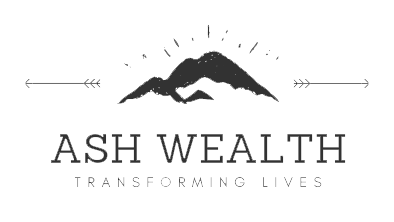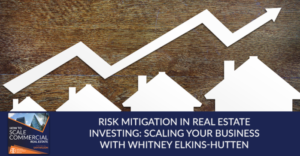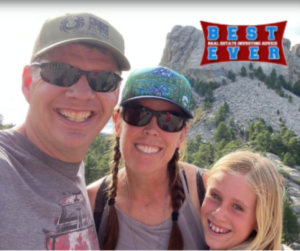If you had an extra $2,000 in your pocket every single month, what would you use it to do? Every time I ask one of my students that question, I get varied answers. From paying down bills and taking more trips to starting down the path of financial independence.
I bet your answer isn’t far off. An extra $2,000 would go a long way! Have you ever considered using rental real estate to get there?
Now, I know what you’re thinking. You’re picturing hassle and uncertainty. But, what if I was able to bring you behind the scenes of a proven way to build passive income with rentals? If that has your interest piqued, you’re in the right place!
Let’s take a look at a case study on how to make an extra $2,000 per month from real estate investing.
How To Build Passive Income With Rentals
The broad concepts of rentals are easy to get, but most people struggle with figuring out how to make it apply to them in their specific situations, i.e. how to come by a set dollar amount of income—in this case, $2,000.
By the end of this blog post, I’ll have it all demystified. You’ll learn three ways to build passive income with rentals, with a rundown of all the numbers and how to piece it all together.
The only thing you’ll have to remember is that in the following examples, I assume that your goal is to build a rental portfolio of $100k homes that cash flow $2,000 a month. I picked these specific numbers because everything that I’m about to show you are real, everyday solutions for dozens of investors in 2019. In fact, my portfolio is made up of homes just like these.
Let’s take a look at the first method.
Buying Rentals With Conventional Lending
Using conventional lending is the first method of creating passive income through real estate. It is one of the most common ways beginners get started in real estate investing.
In this scenario, we will purchase a $100K home using conventional financing. We’ll assume that we are bringing a down payment of 20 percent and the interest rate is 5.5 percent (although the rate may differ depending on your creditworthiness).
Here are the numbers (feel free to use the BiggerPockets calculators or an app like DealCheck.io):
- $100,000 purchase with 80% LTV ($80K loan)
- $20K down (For ease, let’s not calculate closing costs, though you must when you are running your full models.)
- $1,000 for rent (Hitting that 1% rule!)
- $455 for principal and interest
- $65/mo for taxes and $50/mo for insurance (Realistically this will vary.)
- $80/mo for property management (I ALWAYS include management even when I self-managed because you never know when you may need it!)
- $150/mo for CapEx/maintenance/vacancy (This number will come from working with your property manager and experience. If you have less than five to 10 homes, estimate on the higher end. For me, I use a standard 15% in my farm area because I know the true vacancy, buy my homes rehabbed, and can keep maintenance low. However, I see many investors “making the numbers work” by NOT including enough in this cash reserve area.)
- Free and clear money = $1,000 – ($455 + $65 + $50 + $80 + $150) = $200/mo
With this model, you’ll see that to make $2,000 per month or $24k per year, you’ll need about 10 homes. You’ll also save $1,800 per year per home in reserves, which totals out to $18,000 each year. The good thing is that this income will most likely be tax-free as you’ll have depreciation to offset any income in the first few years.
If you decide to go down this path, you’ll need around $200,000 to build out your portfolio. However, holding 10 homes or getting 10 loans can seem daunting, much less coming up with all the cash for the down payments upfront. Let’s explore other options to see what’s out there for you.
Buying Rentals With All Cash
Another way to build your portfolio is to purchase every single property in cash. Personally, I’m not a fan as it locks up your money in an illiquid investment, and doesn’t allow you to leverage other people’s money to build wealth.
Still, I’m not one to knock another person’s preference. Few things compare to having a paid-off home, and the closer you are to retirement, the more sense this method makes.
Here’s how the math shakes out in this scenario:
- $100,000 purchase (no loan)
- $1,000 for rent
- $65/mo for taxes and $50/mo for insurance
- $80/mo for property management
- $150/mo for CapEx / maintenance / vacancy
- Free and clear money = $1,000 – ($65 + $50 + $80 + $150) = $655/mo
In this situation, you’ll need far fewer homes to generate $24k yearly. At $655 per home, you’ll only need about three homes. You’ll also save $1,800 per year per home, which is around $5,400 per year.
The only caveat is this. This income is most likely not all tax-free as depreciation will not cover it all. So, you’ll probably have to pay taxes.
With this approach, you’ll need $300,000 to build out your portfolio. With this strategy, you have fewer loans and fewer homes to manage, but fewer tax deductions and more capital upfront. It’s really all about what you prefer.
As a side note, here are a few fund-raising ideas (with no specific recommendations) on how you could come up with the $200k or $300k to start with either of these methods:
- Save up the down payment from your day gig.
- Start a side gig. (But wait… wasn’t real estate supposed to be your side gig?!)
- Leverage personal lines of credit.
- Partner up with others.
- Wait for assets to appreciate and refinance out your money.
- Sell your properties and trade up. (I’m selling six of my original properties to capitalize on the appreciation and do it all over again!)
- Play the lottery. (Just seeing if you are still awake!)
Still, aren’t sure we’ve found the method for you? Let’s take a look at the third way to start creating passive income?
Buying Rents the BRRRR Way
In case you haven’t realized, I’ve saved the best for last! This is my all-time favorite strategy to get started in real estate investing.
BRRRR stands for:
- Buy
- Rehab
- Rent
- Refinance
- Repeat
In this case, we are picking up a $60k home and putting in $15k to rehab it, leaving us at $75k for a home valued at $100k. Sounds like a dream, right?
If you’re just starting out, I definitely suggest sticking to just cosmetic work for your first few properties. Things like paint, carpet and fixtures. Anything else, and you’ll need to work with a professional BEFORE you buy the house.
In the end, it’s the same 100k home. All you do with this method is to acquire it earlier in the process, and take advantage of the building value by rehabbing it. Once you have bought, rehabbed, and rented your property, now it’s time to get your money out and start cash flowing it.
For ease, I’ll skip how to use hard money or private money to fund the initial deal and rehab and dive right into what final numbers should look like when you refinance.
Here are the numbers (assuming the same conventional 5.5 percent loan in our conventional purchase):
- $100,000 refinance at 75% LTV ($75K loan)
- $25K down payment (But here’s the kicker: the forced equity in the home becomes the down payment.)
- $1,000 for rent
- $425 for principal and interest
- $65/mo for taxes and $50/mo for insurance
- $80/mo for property management
- $150/mo for CapEx / maintenance / vacancy
- Free and clear money = $1,000 – ($425 + $65 + $50 + $80 + $150) = $230/mo
With this plan, you’ll need nine homes to generate $24k each year. You’ll also have $1,350 per year per home in reserves, which is $16,200 per year. This income will most likely be tax-free and you will also have depreciation to offset any income for the first few years!
In this scenario, your total monetary investment could realistically be $0.
Yes, you read that right!
If you’re surprised, that’s the same reaction I had when I ran this situation past my lender. And it’s totally legit!
Now, don’t get me wrong, you will need capital to fund your initial deal and rehab. But if you execute this strategy one property at a time, you only need to fund the initial bankroll for purchase. Then, you can use the same funds over and over again to build your empire! (Beg, borrow—but don’t steal!)
Passive Income Is Within Your Reach
There are myriads of ways to generate $2,000 per month in passive income, including joint ventures, syndications, notes, and crowdfunding.
However, it all boils down to one thing: you don’t have to have tons of money to create this income. Heck, you don’t even have a lot of time if you learn how to properly leverage other people’s networks!
All you need is a little motivation and hustle to start on this path! What do you think of the strategies I’ve mentioned in this post? Let me know in the comments below.
Click here to view the original post.
Enjoy!





